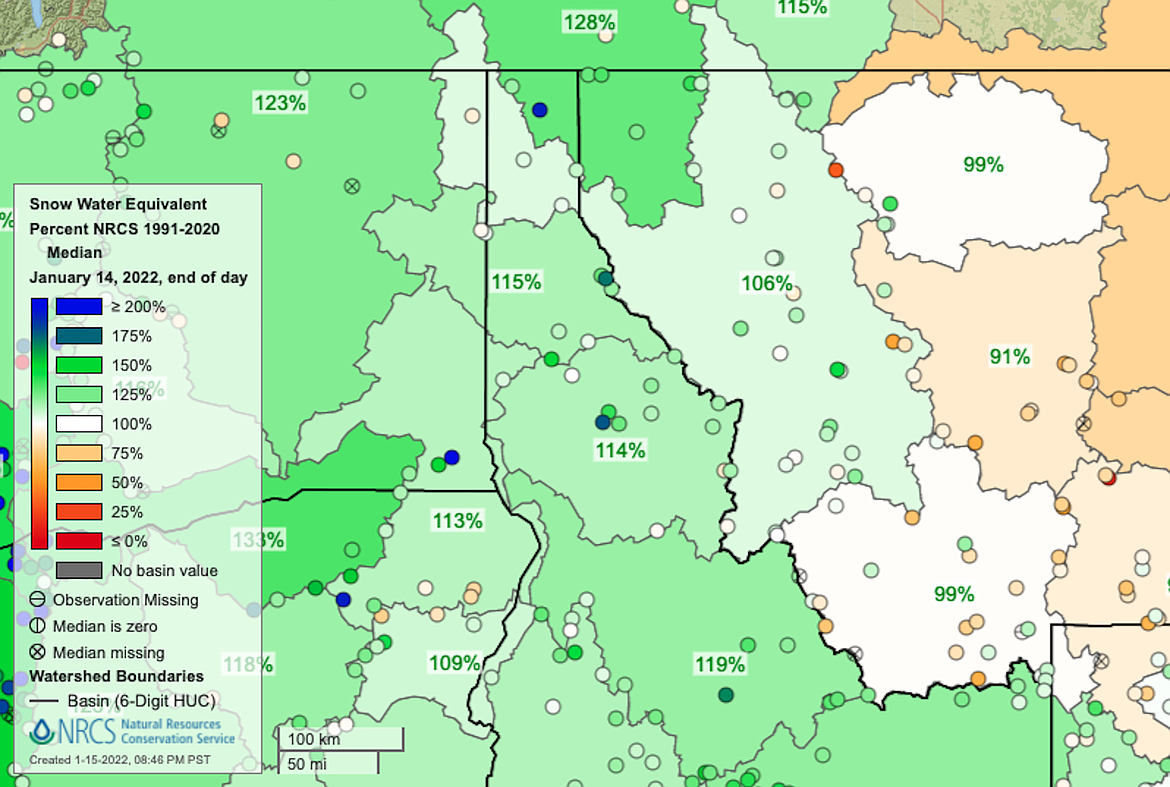Idaho snowpack has water experts cautiously optimistic
BOISE (AP) — Idaho's snowpack levels are in good shape and water experts are cautiously optimistic about water levels in the coming months.
Daniel Tappa, a hydrologist with the Natural Resource Conservation Service, said Thursday that by Jan. 1 most of the state had higher-than-normal snowpack levels.
The snowpack replenishes water supplies in reservoirs, waterways and aquifers as it melts, so higher snowpack levels can mean more water available in spring and summer to support agriculture, communities and ecosystems.
"We're off to a good start in most basins and we've increased our odds to see above normal snowpack in most cases, but we're not out of the woods yet," said Daniel Tappa, a hydrologist with the National Resources Conservation Service. "There are still scenarios in which we could see above or below normal snowpack."
The Boise River System is at 122% of its normal snow water equivalent, according to a map produced by the USDA/NRCS National Water and Climate Center, while the Big Lost Basin, west of Idaho Falls, is at 139% of normal. The Bruneau River Subbasin, southeast of Boise along the Idaho-Nevada border, is at 98% of normal.
In North Idaho, the Schweitzer Basin is listed at 106% of normal, Myrtle Creek is listed at 192% or normal, Hidden Lake is listed at 118% of normal, Quartz Peak is at 97%, Bear Mountain is at 111%, and Mosquito Ridge is at 104% of normal. Other locations include Mica Creek, 112%; Sherwin, 147%; Sunset, 128%; Humboldt Gulch, 171%; and Lookout, 119%.
A ridge of high pressure has currently brought below-average precipitation and above-normal temperatures to most of the state and is predicted to stay positioned over the state through the end of January, said Link Crawford, a hydrologist with the National Weather Service.
Last year's exceptional drought means Idaho's reservoirs had less "carryover storage" of water, so more precipitation is needed to fill them by spring.
Conditions can change quickly. In 2021, snowpack levels looked OK until March, said Crawford.
"Then it seemed like the snow machine turned off," Crawford said. The lack of precipitation combined with record-setting temperatures and a historic heatwave, forcing farmers and ranchers in some areas to contend with an exceptionally short irrigation season.

